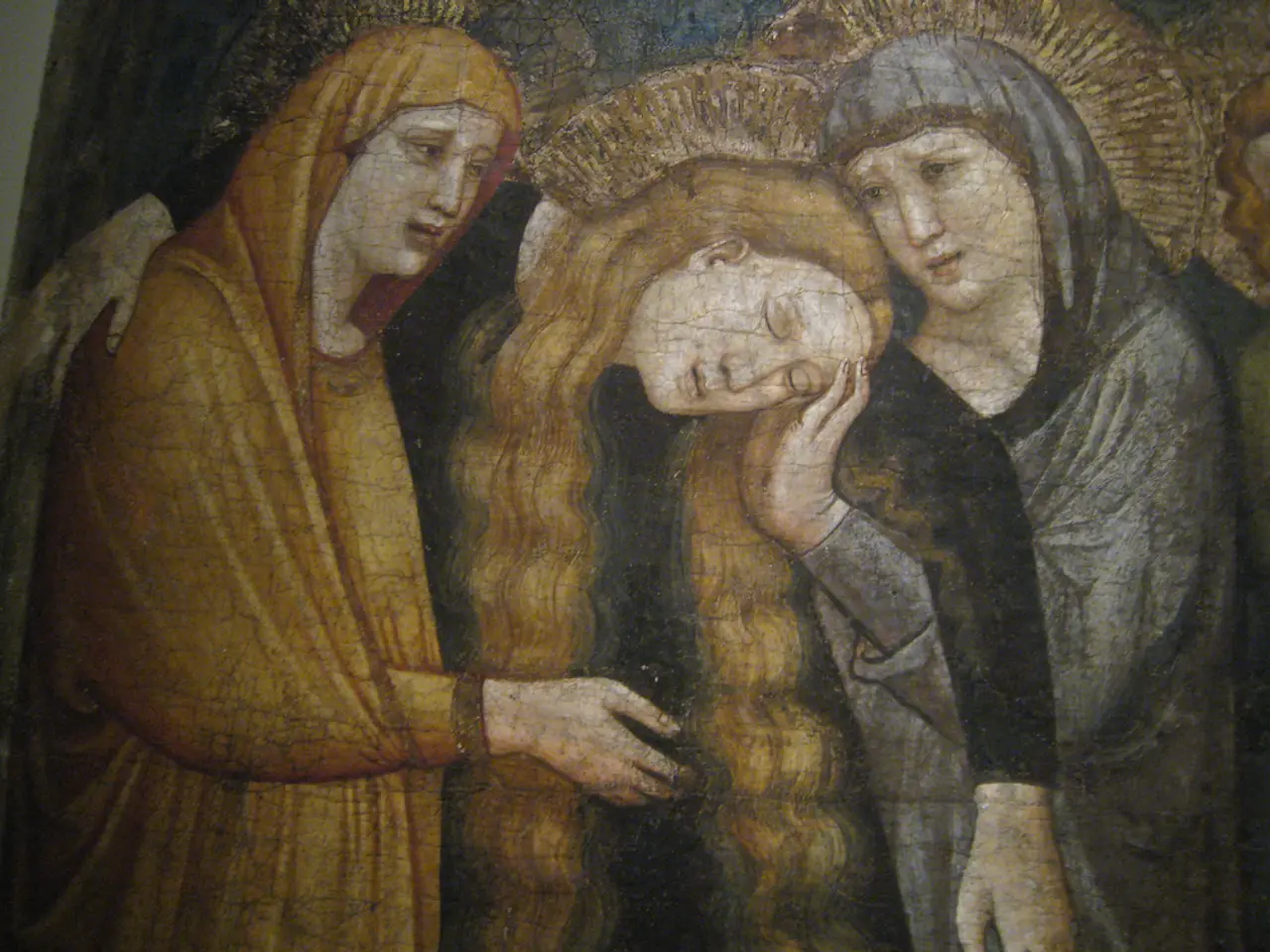Society's Image Shaped Through Artistic Expression
Art has always been a powerful reflection of society, bridging divides and fostering dialogue across diverse communities. As cultural ambassadors, artists serve an essential role in promoting understanding and advocating for positive change.
In times of political and social unrest, artists have taken it upon themselves to challenge societal norms and address pressing issues. Technology has played a significant part in this transformation, enabling artists to reach wider audiences through online platforms and social media, democratizing access to art and fostering greater inclusivity.
Throughout history, art has served as a mirror of cultural values and beliefs, responding to political and social issues, advocating for change, evolving in response to societal shifts, and challenging society to reflect on its values and beliefs.
Examples of art reflecting society can be found in various forms, from political cartoons and protest art to social realism paintings and music that addresses social issues such as inequality, discrimination, and war. Pablo Picasso's Guernica, created in response to the bombing of the Spanish town during the Spanish Civil War, is a poignant example of art as a powerful anti-war statement. Banksy's Flower Thrower and Girl with Balloon, depicting peaceful protest and hope amid social turmoil, are similarly impactful.
Artistic expression has been revolutionized by technology and globalization, with new mediums such as digital art, virtual reality, and interactive installations becoming available. This evolution is evident in the works of artists like Jean-Michel Basquiat, whose graffiti-inspired paintings addressed racism and inequality in the 1980s.
The Feminist Art Movement in the United States, starting in the early 1970s, is another example of art challenging societal norms. Artists like Judy Chicago and Suzanne Lacy created works to highlight women's rights and sexual violence, including Lacy's Three Weeks in May performance raising awareness of rape.
History also shows us that artists and art movements have historically engaged with and challenged political oppression, war, racism, gender inequality, and social injustice, using varied media and styles to provoke thought and activism. The Degenerate Art exhibition under Nazi Germany, which included modern art condemned by the regime, is a testament to this. Artists like Ernst Ludwig Kirchner and Hannah Höch, who tackled political repression through their works, opposed the fascist regime despite the danger.
The Dada Movement, originating during World War I, employed nonsensical and anti-bourgeois art forms like collage and performance to protest war, capitalism, and social norms.
In conclusion, art's role in society is multifaceted, serving as a mirror of cultural values and beliefs, a catalyst for change, and a platform for marginalized voices to be heard. Globalization has facilitated the exchange of artistic ideas and influences across cultures and borders, leading to the emergence of hybrid art forms. As we continue to navigate a complex and ever-changing world, art will undoubtedly continue to play a vital role in reflecting and shaping our society.
[1] https://www.britannica.com/topic/Guernica [2] https://www.britannica.com/biography/Banksy [3] https://www.britannica.com/topic/Feminist-art-movement [4] https://www.britannica.com/topic/Degenerate-Art-exhibition [5] https://www.britannica.com/art/Dada-movement
Visual art, as a reflection of societal values and beliefs, often intertwines with lifestyle, education, and self-development. For example, the Feminist Art Movement emerged in response to societal norms, advocating for change and elevating marginalized voices – fostering self-development and education on women's rights.
Technology has played a crucial role in the democratization of art, making visual art more accessible to diverse audiences, thus serving as a crucial instrument for lifestyle and education-and-self-development in the digital age.




